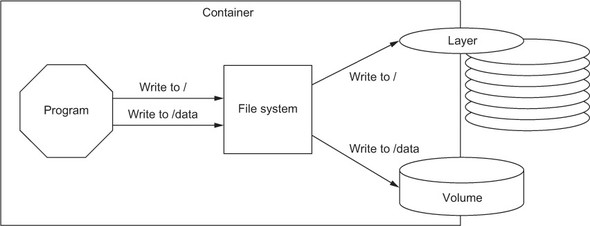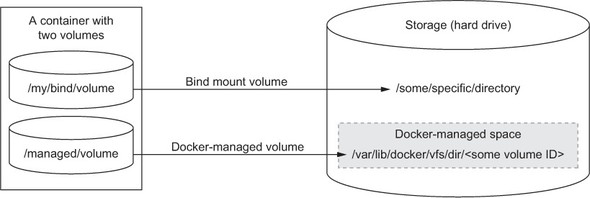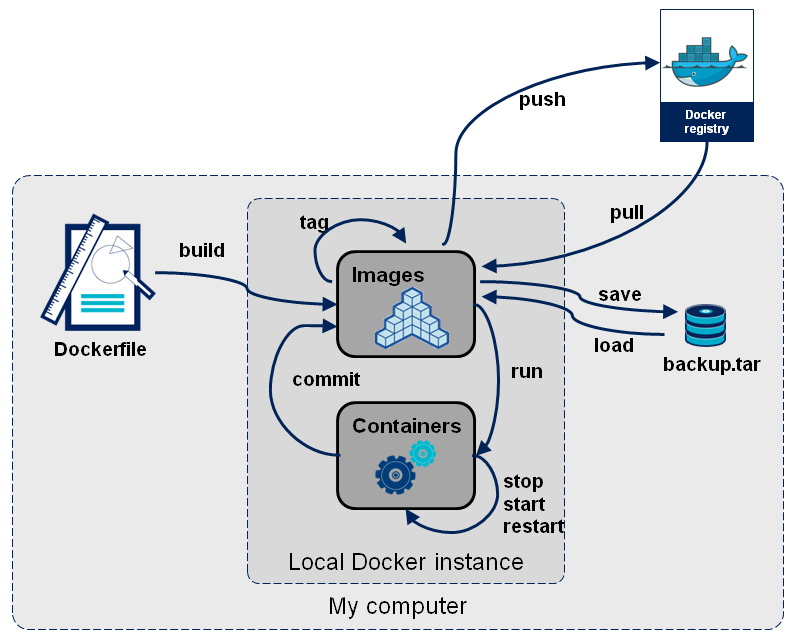도커 요약
docker basic
docker search
docker pull
docker run
https://asciinema.org/a/8541tbmjqi69fe6ssw8oqpr67
machine / compose / swarm
https://blog.codeship.com/docker-machine-compose-and-swarm-how-they-work-together/
- docker machine
https://docs.docker.com/machine/overview/#/whats-the-difference-between-docker-engine-and-docker-machine
https://docs.docker.com/machine/drivers/
https://docs.docker.com/machine/concepts/
-
docker compose
-
swarm
Finally, let’s look at the most interesting tool in the current Docker Toolbox, Docker Swarm. What you’ve done so far is work with one container host and run a container or two, which is great for testing or local development. With Docker Swarm we’re now going to turn that small test environment into a larger setup of clustered container hosts that can be used to scale your operations into something even more useful.
https://platform9.com/blog/compare-kubernetes-vs-docker-swarm/
http://www.slideshare.net/GuillermoLucero/docker-machine-docker-swarm
https://blog.abevoelker.com/why-i-dont-use-docker-much-anymore/
volume
ref 1 : http://container-solutions.com/understanding-volumes-docker/
ref 2 : http://pepa.holla.cz/wp-content/uploads/2016/10/Docker-in-Action.pdf
* union file system

Docker images are stored as series of read-only layers. When we start a container, Docker takes the read-only image and adds a read-write layer on top. If the running container modifies an existing file, the file is copied out of the underlying read-only layer and into the top-most read-write layer where the changes are applied. The version in the read-write layer hides the underlying file, but does not destroy it — it still exists in the underlying layer. When a Docker container is deleted, relaunching the image will start a fresh container without any of the changes made in the previously running container — those changes are lost. Docker calls this combination of read-only layers with a read-write layer on top a Union File System.

In order to be able to save (persist) data and also to share data between containers, Docker came up with the concept of volumes. Quite simply, volumes are directories (or files) that are outside of the default Union File System and exist as normal directories and files on the host filesystem.
* volume type

- Docker-managed volume
docker run -it --name vol-test -v /data centos /bin/bash
docker inspect -f "" vol-test | jq .
- Bind mount volume
docker run -it --name vol-test -v /src/sample:/data centos /bin/bash
Mounting a host directory can be useful for testing. For example, you can mount source code inside a container. Then, change the source code and see its effect on the application in real time.
* Sharing Volume
https://docs.docker.com/compose/wordpress/
https://docs.docker.com/compose/compose-file/#volume-configuration-reference
Docker registry
-
docker image 저장 서버 : 서버에 저장하거나 s3에 저장
-
docker registry도 하나의 docker image이고 docker hub에 공개되어 있음.
-
docker tag명령으로 태그 먼저 생성 후,docker push로 registry 서버에 업로드.docker tag hello:0.1 localhost:5000/hello:0.1 docker push localhost:5000/hello:0.1

Docker usecase
- image included source = docker managed volume
#!Dockerfile
# Base this docker container off the official golang docker image.
# Docker containers inherit everything from their base.
FROM golang:1.6.2
# Create a directory inside the container to store all our application and then make it the working directory.
RUN mkdir -p /src/
RUN cd /go/src/ && git clone https://github.com/surinkim/gosample.git
WORKDIR /go/src/gosample
# Copy the example-app directory (where the Dockerfile lives) into the container.
#COPY . /go/src/example-app
# Download and install any required third party dependencies into the container.
RUN go get github.com/codegangsta/gin
RUN go-wrapper download
RUN go-wrapper install
# Set the PORT environment variable inside the container
ENV PORT 8080
# Expose port 8080 to the host so we can access our application
EXPOSE 3000
# Now tell Docker what command to run when the container starts
CMD gin run
#CMD /bin/bash
- image excluded source = host bind volume